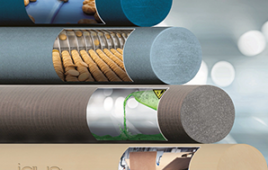The Bureau of Reclamation has released a report summarizing six years of testing coatings to control the attachment of quagga and zebra mussels to water and power facilities.
Since the study began in 2008, Reclamation has tested more than 100 coatings and materials.
“Controlling attachment of invasive quagga and zebra mussels on Bureau of Reclamation facilities is important to ensure water delivery and hydropower generation,” principal researcher Allen Skaja said. “Though we have tested many different coatings, three durable foul-release coatings are showing promise in managing mussels.”
The Silicon Epoxy allowed mussels to attach but were easily cleaned for the first 12 months of exposure. Two experimental formulations prevented mussel attachment for the first 18 months. These three durable foul release coatings will be tested further.
Silicone foul release coatings are the most promising for deterring mussel attachment in flowing and static water. Though aquatic vegetation and algae may provide a surface for attachment, the coatings can be easily cleaned with no measurable force. Unfortunately, silicone foul release coatings are soft and are easily damaged.
The testing was conducted at Parker Dam on the Colorado River. Invasive mussels at this location reproduce year-round and have a high growth rate. Each coating system was tested in static and flowing water conditions at the dam.
Each coating system was evaluated approximately every six months, about every May and November.
The research was funded by Reclamation’s Research and Development Office where research is conducted to develop and deploy successful solutions to improve water management practices, increase water supply and ensure cost-effective power generation operations.
To view the report, please visit Reclamation’s Quagga and Zebra Mussel Website.
Filed Under: Materials • advanced




